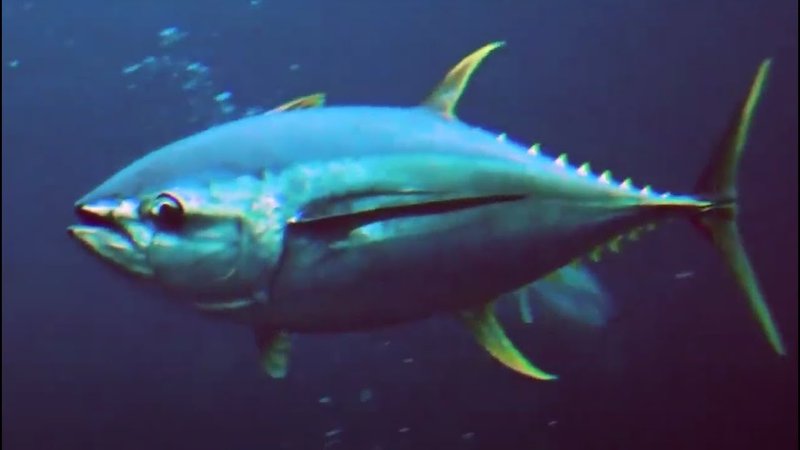
Imagine you’re at the beach, just past the waves, floating in the calm, clear water. You spot a flash of yellow and silver zooming by. That’s the yellowfin tuna, a powerful swimmer that can reach speeds of up to 75 miles per hour! Engaging with these amazing creatures might sound thrilling, but it’s crucial to understand the dynamics of interacting with such a wild animal. Let’s explore how humans can interact safely with yellowfin tuna and what precautions we need to take.
Understanding Yellowfin Tuna Behavior
Yellowfin tuna are fascinating fish with some unique behaviors. They are known for their agility and speed, often seen breaking the surface of the water while chasing after smaller fish. This hunting behavior makes them proficient predators, but it also means they can be quite wary of potential threats, including humans.
You might be wondering how their behavior affects human interactions. Generally speaking, yellowfin tuna are not inherently aggressive, but they’re not overly friendly either. Their instinct is to flee from perceived danger, which means they will swim away quickly if approached too closely. It’s essential to respect their space and approach calmly.
Understanding their social structure adds another layer to our interaction. Yellowfin tuna often travel in schools, which can provide a sense of safety. When you see a group moving together, they’re likely coordinating their efforts to hunt or evade predators. Being aware of their schooling behavior can help when observing them, as you’ll often see them working as a team, which is quite a sight!
Safe Practices for Interacting with Yellowfin Tuna
If you’re lucky enough to encounter a yellowfin tuna while snorkeling or diving, there are some basic practices to keep in mind to ensure a safe interaction. First and foremost, keep a respectful distance. While it might be tempting to swim up close for a better look, giving them space is key to keeping both you and the tuna safe.
Here are some important practices to follow:
- Stay Calm: Sudden movements can startle tuna. Swim smoothly and gently.
- Avoid Touching: Interaction should be visual, not physical. Touching can stress the fish.
- Observe: Take the time to watch their natural behavior from a distance.
By following these practices, you not only protect yourself but also ensure that the yellowfin tuna remains comfortable in its natural habitat. Remember, the ocean is their home, and we’re just guests.
Potential Risks of Close Encounters
While yellowfin tuna are generally not dangerous, there are some risks to consider when interacting with them. As powerful swimmers, they can inadvertently injure someone if startled or panicked. Plus, there’s always the risk of coming across other marine creatures in the same area that might not be as friendly.
One major risk involves getting too close to the tuna. If a tuna feels threatened, it could swim quickly and create turbulence in the water, which could lead to injuries. Additionally, sudden movements from humans can create a panic response, causing the fish to rush away, potentially colliding with divers or swimmers.
It’s not just about physical safety; there can also be environmental considerations. Overharvesting and habitat loss have put pressure on yellowfin tuna populations. By respecting their habitat and avoiding interactions that stress them out, we can help protect these magnificent creatures.
The Importance of Respecting Marine Life
Interactions with marine life, including yellowfin tuna, should be driven by a deep respect for their wellbeing. These creatures play a vital role in ocean ecosystems, helping to maintain the balance of marine life. When humans approach them, it’s crucial to think about the impact of our interactions.
Here’s the thing: approaching marine life shouldn’t be about getting a perfect Instagram shot or a thrilling story to tell. It should be about learning and appreciating these animals as part of a larger ecosystem. Understanding the importance of their role helps foster a connection between humans and the ocean.
Educating oneself and others about marine life is essential. Whether through scuba diving courses or wildlife documentaries, knowledge can help create a culture of respect and awareness. If we appreciate the complexity of ocean ecosystems, it becomes easier to act in a responsible manner when we find ourselves in their habitat.
What to Do if You Spot a Yellowfin Tuna
Spotted a yellowfin tuna while out on the water? Here’s how to handle it. First, if you’re snorkeling, simply float and observe. If you’re in a boat, shut off the engine to avoid noise pollution. Being quiet allows the tuna to feel safe and act naturally.
If the tuna seems curious and approaches you, don’t panic. Try to remain still and watch. They may swim circles around you, which is their way of investigating. If at any point they appear distressed or agitated, gently back away to give them space.
You might also want to avoid using flash photography or loud noises, as these can startle the tuna or other marine life nearby. The bottom line? Be respectful, keep your movements slow, and enjoy the moment without trying to force a closer encounter.
Conservation and Future of Yellowfin Tuna
Conserving yellowfin tuna populations is crucial for maintaining healthy oceans. Overfishing has led to significant declines in their numbers. As consumers, we can make conscious choices about seafood consumption. Look for sustainably sourced fish to ensure these amazing creatures thrive for generations to come.
There are various organizations focused on tuna conservation efforts. They work to establish fishing quotas and protected areas, which help preserve not only yellowfin tuna but also the entire marine ecosystem. Supporting these initiatives or getting involved in local conservation programs can make a big difference.
Raising awareness about tuna conservation is just as important. Sharing information with friends and family or advocating for sustainable practices can help create a community dedicated to protecting these magnificent fish. After all, a thriving ocean benefits everyone.
The Joy of Observing Yellowfin Tuna
At the end of the day, the best part about interacting with yellowfin tuna is the sheer joy it can bring. Watching a yellowfin tuna darting through the water is like witnessing a living rocket. The bright, shimmering colors can take your breath away and remind us of the beauty of nature.
So, the next time you’re near the ocean, and you spot a yellowfin tuna, remember: respecting their space, maintaining a sense of calm, and appreciating their role in the marine world can lead to unforgettable encounters. Interacting with these creatures can be a beautiful experience, as long as we approach it wisely.
To summarize, yes, humans can interact safely with yellowfin tuna, but it requires understanding, respect, and responsibility. By following proper practices, we can ensure that our interactions are both safe for us and harmonious for the fish. So, gear up, get in the water, and enjoy the magic of the ocean—just remember to respect your underwater companions!

